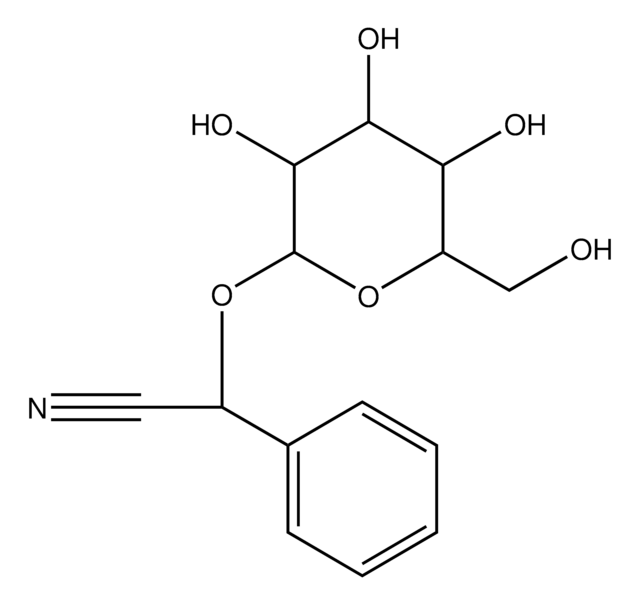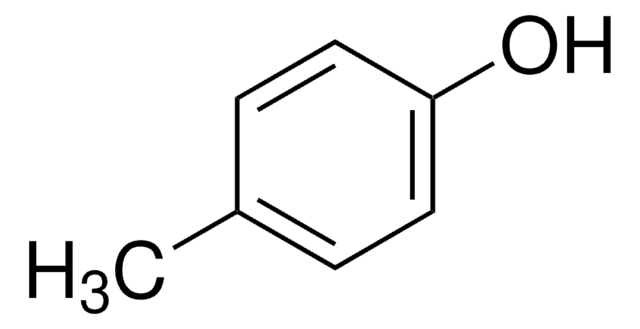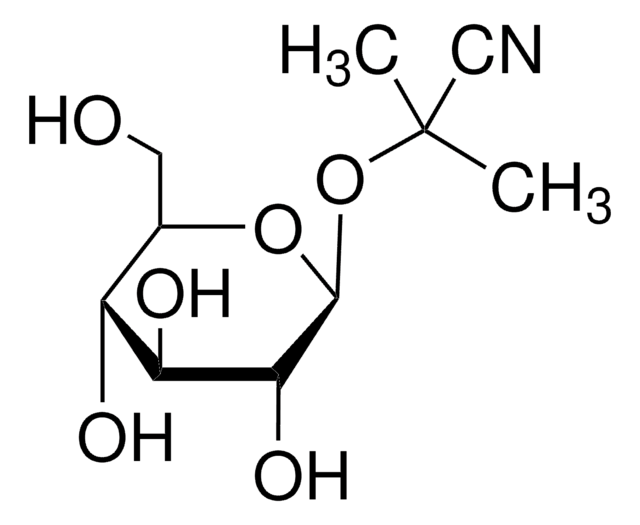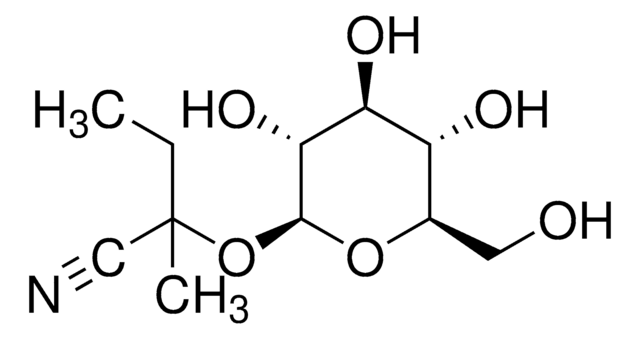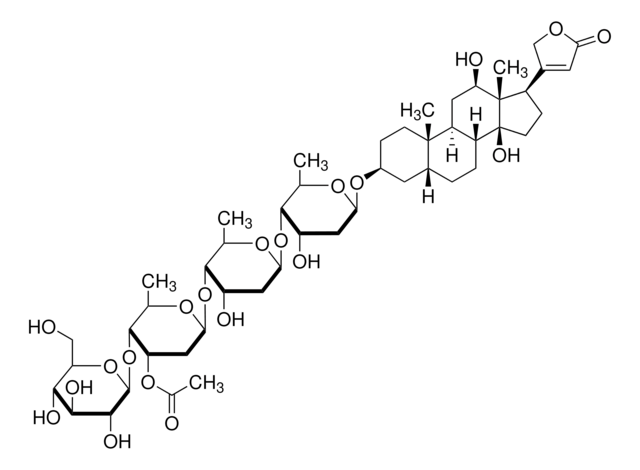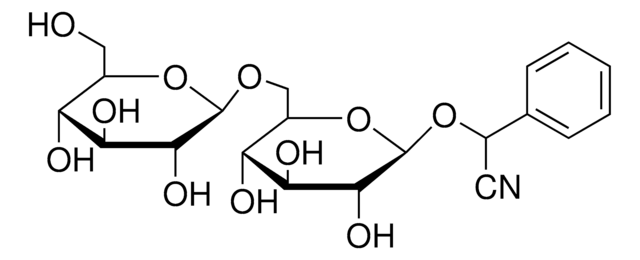07743
Dhurrin
≥95% (HPLC)
Synonym(s):
(S)-(β-D-Glucopyranosyloxy)(4-hydroxyphenyl)acetonitrile, (S)-4-Hydroxymandelonitrile β-D-glucoside
Sign Into View Organizational & Contract Pricing
All Photos(1)
About This Item
Empirical Formula (Hill Notation):
C14H17NO7
CAS Number:
Molecular Weight:
311.29
EC Number:
MDL number:
UNSPSC Code:
12352201
PubChem Substance ID:
NACRES:
NA.25
Recommended Products
Quality Level
Assay
≥95% (HPLC)
form
powder or crystals
color
white to light brown
storage temp.
room temp
SMILES string
OC[C@H]1O[C@@H](O[C@H](C#N)c2ccc(O)cc2)[C@H](O)[C@@H](O)[C@@H]1O
InChI
1S/C14H17NO7/c15-5-9(7-1-3-8(17)4-2-7)21-14-13(20)12(19)11(18)10(6-16)22-14/h1-4,9-14,16-20H,6H2/t9-,10-,11-,12+,13-,14-/m1/s1
InChI key
NVLTYOJHPBMILU-YOVYLDAJSA-N
General description
Dhurrin is a cyanogenic glucoside found expressed in the leaves of Sorghum plants. Studies have shown that as the plant ages, dhurrin expression depends are nitrogen availability. Dhurrin production shifts from the leaves to the stems during development.
Packaging
Bottomless glass bottle. Contents are inside inserted fused cone.
Other Notes
To gain a comprehensive understanding of our extensive range of Monosaccharides for your research, we encourage you to visit our Carbohydrates Category page.
Choose from one of the most recent versions:
Already Own This Product?
Find documentation for the products that you have recently purchased in the Document Library.
Cecilia K Blomstedt et al.
Plant biotechnology journal, 10(1), 54-66 (2011-09-02)
Cyanogenic glucosides are present in several crop plants and can pose a significant problem for human and animal consumption, because of their ability to release toxic hydrogen cyanide. Sorghum bicolor L. contains the cyanogenic glucoside dhurrin. A qualitative biochemical screen
Gina Rosalinda De Nicola et al.
Journal of agricultural and food chemistry, 59(15), 8065-8069 (2011-06-29)
Cyanogenic plants have some potential as biocidal green manure crops in limiting several soilborne pests and pathogens. Sorghum (Sorghum bicolor (L.) Moench) and Sudangrass (Sorghum bicolor subsp. sudanense (P.) Stapf), in fact, contain the cyanogenic glucoside p-hydroxy-(S)-mandelonitrile-β-D-glucoside (dhurrin) as a
D B Tattersall et al.
Science (New York, N.Y.), 293(5536), 1826-1828 (2001-07-28)
The entire pathway for synthesis of the tyrosine-derived cyanogenic glucoside dhurrin has been transferred from Sorghum bicolor to Arabidopsis thaliana. Here, we document that genetically engineered plants are able to synthesize and store large amounts of new natural products. The
Plant science. Dynamic metabolons.
Birger Lindberg Møller
Science (New York, N.Y.), 330(6009), 1328-1329 (2010-12-04)
Kirsten A Nielsen et al.
Planta, 223(5), 1010-1023 (2005-11-25)
Barley (Hordeum vulgare L.) produces a leucine-derived cyanogenic beta-D-glucoside, epiheterodendrin that accumulates specifically in leaf epidermis. Barley leaves are not cyanogenic, i.e. they do not possess the ability to release hydrogen cyanide, because they lack a cyanide releasing beta-D-glucosidase. Cyanogenesis
Our team of scientists has experience in all areas of research including Life Science, Material Science, Chemical Synthesis, Chromatography, Analytical and many others.
Contact Technical Service